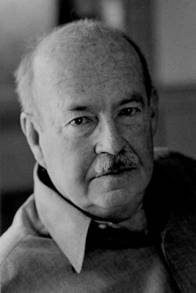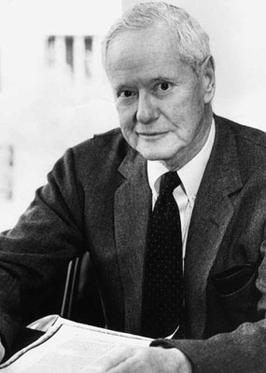Related Research Articles
Systems theory is the transdisciplinary study of systems, i.e. cohesive groups of interrelated, interdependent components that can be natural or artificial. Every system has causal boundaries, is influenced by its context, defined by its structure, function and role, and expressed through its relations with other systems. A system is "more than the sum of its parts" by expressing synergy or emergent behavior.

Talcott Parsons was an American sociologist of the classical tradition, best known for his social action theory and structural functionalism. Parsons is considered one of the most influential figures in sociology in the 20th century. After earning a PhD in economics, he served on the faculty at Harvard University from 1927 to 1973. In 1930, he was among the first professors in its new sociology department. Later, he was instrumental in the establishment of the Department of Social Relations at Harvard.

George Ritzer is an American sociologist, professor, and author who has mainly studied globalization, metatheory, patterns of consumption, and modern/postmodern social theory. His concept of McDonaldization draws upon Max Weber's idea of rationalization through the lens of the fast food industry. He coined the term in a 1983 article for The Journal of American Culture, developing the concept in The McDonaldization of Society (1993), which is among the best selling monographs in the history of American sociology.

Robert King Merton was an American sociologist who is considered a founding father of modern sociology, and a major contributor to the subfield of criminology. He served as the 47th president of the American Sociological Association. He spent most of his career teaching at Columbia University, where he attained the rank of University Professor. In 1994 he was awarded the National Medal of Science for his contributions to the field and for having founded the sociology of science.

Structural functionalism, or simply functionalism, is "a framework for building theory that sees society as a complex system whose parts work together to promote solidarity and stability".
In the social sciences there is a standing debate over the primacy of structure or agency in shaping human behaviour. Structure is the recurrent patterned arrangements which influence or limit the choices and opportunities available. Agency is the capacity of individuals to act independently and to make their own free choices. The structure versus agency debate may be understood as an issue of socialization against autonomy in determining whether an individual acts as a free agent or in a manner dictated by social structure.
Role theory is a concept in sociology and in social psychology that considers most of everyday activity to be the acting-out of socially defined categories. Each role is a set of rights, duties, expectations, norms, and behaviors that a person has to face and fulfill. The model is based on the observation that people behave in a predictable way, and that an individual's behavior is context specific, based on social position and other factors. Research conducted on role theory mainly centers around the concepts of consensus, role conflict, role taking, and conformity. The theatre is a metaphor often used to describe role theory.

Sociocybernetics is an interdisciplinary science between sociology and general systems theory and cybernetics. The International Sociological Association has a specialist research committee in the area – RC51 – which publishes the (electronic) Journal of Sociocybernetics.

A cultural system is the interaction of different elements in culture. While a cultural system is very different from a social system, sometimes both systems together are referred to as the sociocultural system.

Harold Garfinkel was an American sociologist and ethnomethodologist, who taught at the University of California, Los Angeles. Having developed and established ethnomethodology as a field of inquiry in sociology, he is probably best known for Studies in Ethnomethodology (1967), a collection of articles. Selections from unpublished materials were later published in two volumes: Seeing Sociologically and Ethnomethodology's Program. Moreover, during his time at University of Newark, which became Rutgers University, and enrolled in Theory of Accounts, a course that covered accounting and bookkeeping procedures. Where from this class "even in setting up an accounting sheet, he was theorizing the various categories into which the numbers would be placed" which furthered his understanding of accountability.

Microsociology is one of the main levels of analysis of sociology, concerning the nature of everyday human social interactions and agency on a small scale: face to face. Microsociology is based on subjective interpretative analysis rather than statistical or empirical observation, and shares close association with the philosophy of phenomenology. Methods include symbolic interactionism and ethnomethodology; ethnomethodology in particular has led to many academic sub-divisions and studies such as micro-linguistical research and other related aspects of human social behaviour. Macrosociology, by contrast, concerns the social structure and broader systems.

A sociological theory is a supposition that intends to consider, analyze, and/or explain objects of social reality from a sociological perspective, drawing connections between individual concepts in order to organize and substantiate sociological knowledge. Hence, such knowledge is composed of complex theoretical frameworks and methodology.
"Instrumental" and "value-rational action" are terms scholars use to identify two kinds of behavior that humans can engage in. Scholars call using means that "work" as tools, instrumental action, and pursuing ends that are "right" as legitimate ends, value-rational action.
Middle-range theory, developed by Robert K. Merton, is an approach to sociological theorizing aimed at integrating theory and empirical research. It is currently the de facto dominant approach to sociological theory construction, especially in the United States.

The sociology of education is the study of how public institutions and individual experiences affect education and its outcomes. It is mostly concerned with the public schooling systems of modern industrial societies, including the expansion of higher, further, adult, and continuing education.

In sociology, a social system is the patterned network of relationships constituting a coherent whole that exist between individuals, groups, and institutions. It is the formal structure of role and status that can form in a small, stable group. An individual may belong to multiple social systems at once; examples of social systems include nuclear family units, communities, cities, nations, college campuses, religions, corporations, and industries. The organization and definition of groups within a social system depend on various shared properties such as location, socioeconomic status, race, religion, societal function, or other distinguishable features.
In system theory, "differentiation" is the increase of subsystems in a modern society to increase the complexity of a society. Each subsystem can make different connections with other subsystems, and this leads to more variation within the system in order to respond to variation in the environment.
In sociological research, functional prerequisites are the basic needs that an individual requires to live above the poverty line. Functional prerequisites may also refer to the factors that allow a society to maintain social order.
Jeffrey Charles Alexander is an American sociologist, and a prominent social theorist. He is the founding figure in the school of cultural sociology he refers to as the "strong program".

In sociology, action theory is the theory of social action presented by the American theorist Talcott Parsons.
References
- Parsons, Talcott (1970). The Social System. London: Routledge & Kegan Paul Ltd. ISBN 0-7100-1931-9.
- Ritzer, George; Barry Smart (2001). Handbook of Social Theory. London: SAGE Publications Ltd. ISBN 0-7619-5840-1.